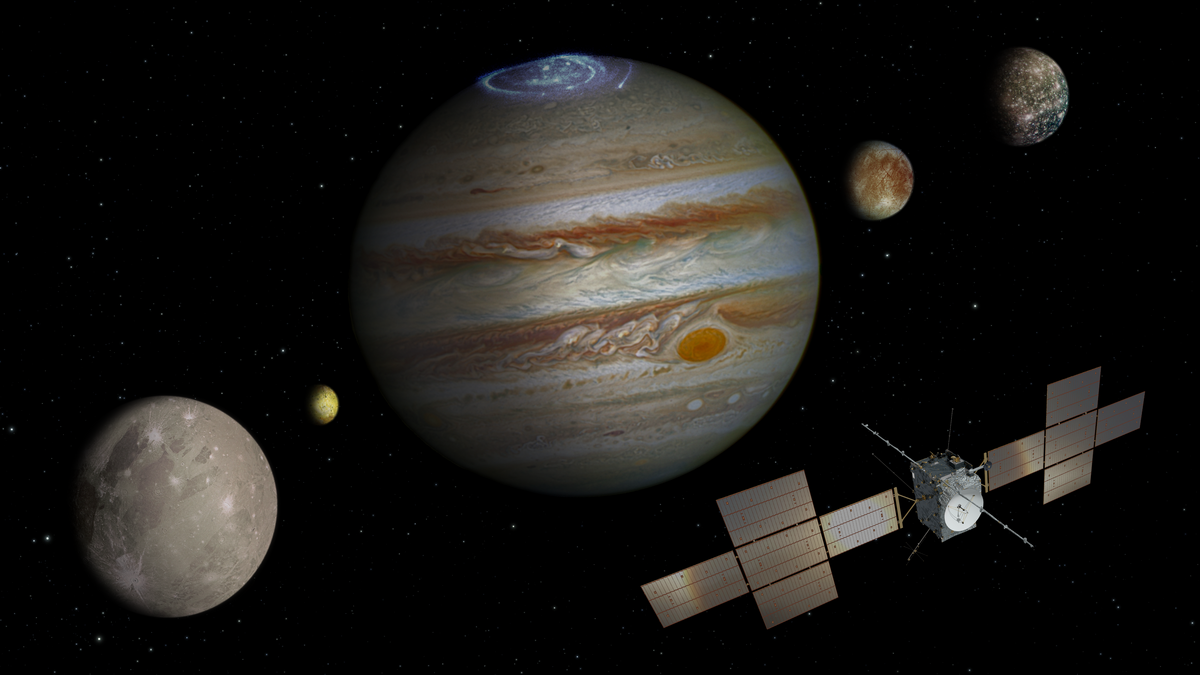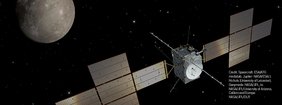The ESA JUICE (JUpiter ICy moons Explorer) mission will perform detailed investigations of Jupiter and its three largest icy moons – Europa, Ganymede and Callisto. The primary JUICE mission theme is to investigate the emergence of habitable worlds around gas giants with the Jupiter system as an archetype for gas giants. The RIME (Radar for Icy Moons Exploration) payload is an ice penetrating radar sounder to study subsurface structure of the icy moons. The 9 MHz radar is penetrating the subsurface structure down to 9 km depth with a resolution of 30 m in verticality.
The RIME Antenna, designed and manufactured by SpaceTech, is a 16 m long deployable ultra-light CFRP antenna, weighting only 1.5 kg. It is able to withstand temperatures up to 191 °C which occurs during the fly-by at Venus down to the icy-moon environment of -269°C. During launch it is stored on the spacecraft folded 6 times in in a hold-down mechanism (also provided by STI) and will be released to its full length in orbit. To achieve extremely low weight even the antenna hinges are realized in CFRP. The whole hinge design – as simple as it may look – is in fact a sophisticated design based on extensive dynamic multi-body simulation and testing to ensure a robust in orbit deployment and function throughout the mission. Another challenge was to transform the CFRP tube in good electrical conductor to maximize the RF performance and providing a conductive surface to avoid disturbances for other scientific payloads. SpaceTech developed a conductive resin to meet this challenge.
After successful testing of all deployment mechanisms in the SpaceTech clean room as part of the overall test campaign, SpaceTech delivered and installed the flight model of the CRFP antenna on the spacecraft at Airbus in France in the first week of January 2023, getting ready for its travel to Kourou with the goal to be launched on 5th April 2023.
In the video you can see a simplified visualization of the multi-body simulation of the antenna deployment followed by the real-world deployment in our clean room (which comes with quite some challenges under 1-g and clean room dimension restrictions).
SpaceTech antenna for JUICE RIME installed and ready to fly




